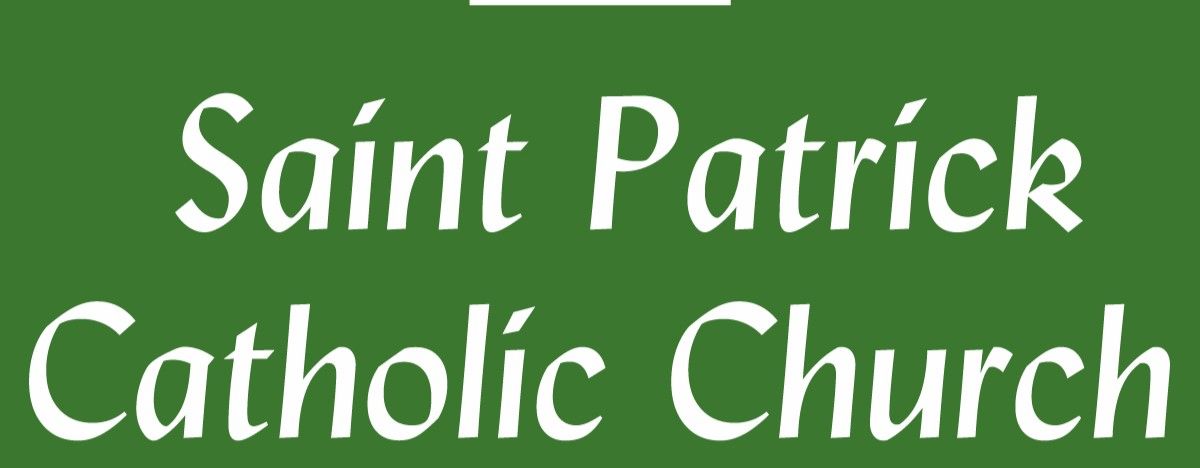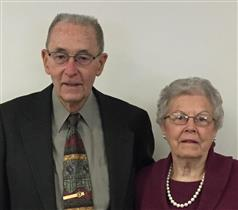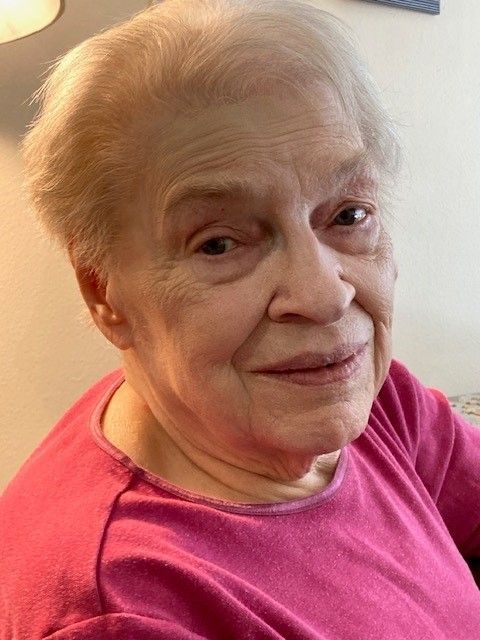Pat Vognsen, a lifelong parishioner, was raised by her grandparents in Cedar Falls. They lived just a few blocks from the church and school on Washington Street. She attended St. Patrick School and then attended Our Lady of Victory Academy in Waterloo for two years (traveling daily back and forth on the streetcar to Waterloo) and then went on to graduate from Cedar Falls High School in 1954. She and her late husband, George, were married at Saint Patrick Church. They had four children, who all were baptized at St. Patrick and raised in the faith. Her grandparents were the Cranes, who were also lifelong parishioners of Saint Patrick.
Many of her memories of St. Patrick School and the parish were chronicled by two of her former classmates, who several years ago sent her a copy of a booklet they produced titled “Yes, S’ter, No S’ter: Memories of Old St. Pat’s.” When she and her 11 classmates graduated from St. Patrick School in 1950, they were the last eighth graders who went through all eight years in the original buildings before the new school was completed in 1951.
In May 2024, Pat shared some of her memories of Saint Patrick through the years.
What was it like at the old school and going to Mass at St. Patrick in those days?
We went to Mass every day – that was the beginning of our school day. … We went to the chapel (in the church) and then it was on the bottom floor. There was a kitchen and then there was the chapel and then there was the gym. And in the gym, there was a stage where we had a lot of musical programs. We had a wonderful music teacher. She was an old teacher, but she knew what she was doing.
Was there any question that you would attend Catholic school?
I think back then people who were at St. Patrick's – Catholics -- they put their kids in Catholic school. There were very few kids that didn't go to the school. We were within that circle of St. Pat’s … we didn't really associate much with other with other churches like we do now. There was a kind of a separation.
Would families go downstairs to have coffee after Mass?
No. For religious education, there were two or three places that parishioners offered their homes – one was Study Club; my grandmother always went. I think they had one at night and one in the daytime. She loved Study Club, and then on Thursday nights we had a Holy Hour. Everybody liked that. And some of us kids would go sometimes, but not all the time. That was also in the Chapel.
And when we went to daily Mass, most of our mothers would go. I think people were more aware of the Catholic Church that they were part of back then. … The confession lines were always long. And you knew you had to wait when you went to confession and the sisters told us we had to go every week.
Who was the pastor with your class in this photo?
That was Father Stephen Mauer. He was pretty well liked by everybody; our kids all liked him. And while was at St. Pat’s he was made monsignor. And unfortunately, he died at St. Pat’s. … The rectory was a house on the corner, and there was a window on the side on Washington Street side. And that's where they laid him to rest so that the parishioners can walk by and say a prayer. I thought it was a little creepy to have a body in the window.
What traditions do you remember from growing up at Saint Patrick’s?
I remember when they took down the communion rail; I can’t remember just exactly when that was. But that was one of the first things that changed. And I thought, “How are we going to kneel for communion without a communion rail?
But of course, back then lay people could not distribute; you could not touch the sacred host. And when we were in the presence of the Blessed Sacrament, women had to wear hats. What was so funny about that is that the sisters, if you didn’t have a hat, would put a handkerchief on their head. I think it was patterning it after the good old days when ladies wore veils all the time. But that went away, thank goodness.
And back in the old days, around when I was first starting school, they started this turkey dinner at St. Pat’s. It was all men who ran it, and they were led by two gentlemen in the parish who had restaurants downtown. And as time went on, everybody in town looked forward to that turkey dinner – it was so good. They had it in November, but not too close to Thanksgiving. They continued the turkey dinner, but it’s not the same as it was then. I can remember the ushers talking in the morning about how early they came to get the turkey dinner ready.
Looking back at your time at St. Patrick, what’s your overall feeling about the parish?
I love St. Pat's. The thing that inspires me is that great big crucifix, right above tabernacle. When I get to Mass — and of course, I sit in the front pew now because of the walker — I just love (looking at the crucifix). I just love it. I don't want to leave.



